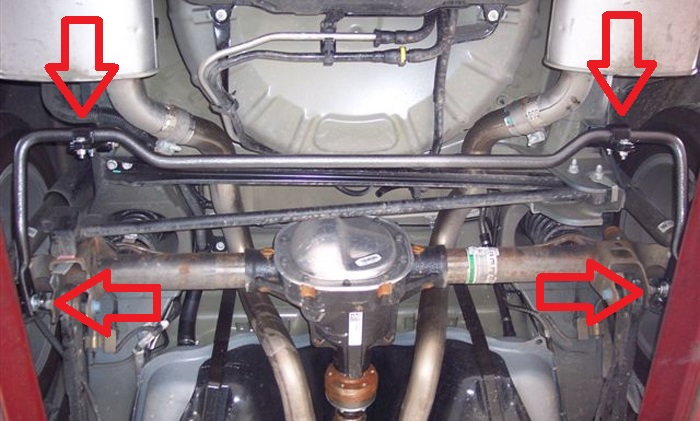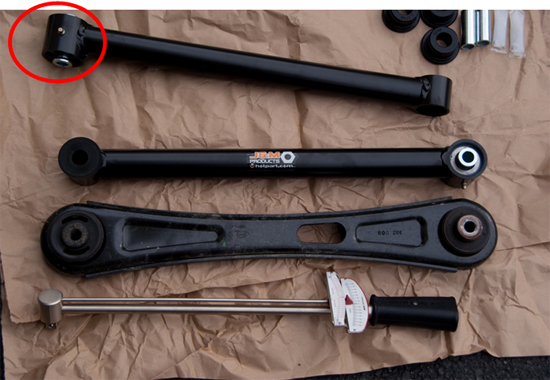Ford Mustang and Ford Mustang GT 1994-2004: Suspension Noise Diagnostic Guide
Figuring out why your suspension is making noise does not have to be as complicated as you think. Here are three issues that may be causing some unwanted suspension noise.
This article applies to the Ford Mustang and Ford Mustang GT (1994-2004).
The Ford Mustang is a sports coupe, and its design is supposed to reflect its muscle car heritage. This means every part of this vehicle should operate smoothly, at least that's what Mustang owners believe. Suspension noise is caused by a number of things, such as worn bushings or even damaged components. You can try your hand, and wallet, at taking the vehicle to be diagnosed. However, most cases result in guesses, which means less money in your pocket without a fixed car. So instead of spending money, why don't you take the time to diagnose your suspension noise at home. Here are three common problems that cause suspension noise.

Materials Needed
- Car ramps
- Metric socket set
- Ratcheting wrench
- Jack
- Jack stands
Step 1 – Check your sway bar
It might be loose.
The most common source of the mystery thump is the sway bar. A sway bar helps support the car when it turns, minimizing the body roll of the chassis. These sway bars connect to the left and right wheels, which are mounted under the chassis.
- Inspect the whole sway bar, including the end-links on each side. If there is any play, tighten them down or replace them.
- Check the bushings that hold the sway bar in place. These pieces should be solid; if they are cracked or split, they will cause the bar to vibrate.
- Make sure the bar itself is held firmly in place.

Pro Tip
Some people opt out for upgraded sway bars, which increases the overall stability of the chassis as well as rid it of any vibrations.
Step 2 – Check the rear lower control arm bushings
The bushing may be worn.
The bushings should be tightly fitted onto the lower control arm. This means there should not be any cracks or rips on the bushings.
- Drive the car up some ramps.
- Visually inspect the bushings and check for any deformities.
- Support the chassis on jack stands and remove the ramps.
- Push the wheels up and down, listening to the car.
If it's squeaking, replace the unit. Some people have opted to replace them with beefier arms to help prevent their premature failure.

Step 3 – Check your shocks
Shocks might be blown.
Shock absorbers are built to last thousands of miles without failure, but that still does not make them immune to debris. If something manages to chip the piston rod inside one of the struts, squeaky sounds are the least of your worries.
- Keep your car flat on the ground and push on top of the body.
- Pay attention to how the chassis resets after pushing the shocks down.
- Check each side of the car until you find the one that is making noise.
- Jack the car up and support it.
- Remove the wheel and inspect the condition of the strut, looking for any signs of leakage.
If the strut fails any of these inspections, replace the unit.

Related Discussions
- Front End Suspension Problems - MustangForums.com
- Suspension Rattling - MustangForums.com
- Squeaky Suspension Problem - MustangForums.com
- Loud Squeaking Noise From Rear Suspension - MustangForums.com
- Clunk Noise When Going Over Bump - MustangForums.com






